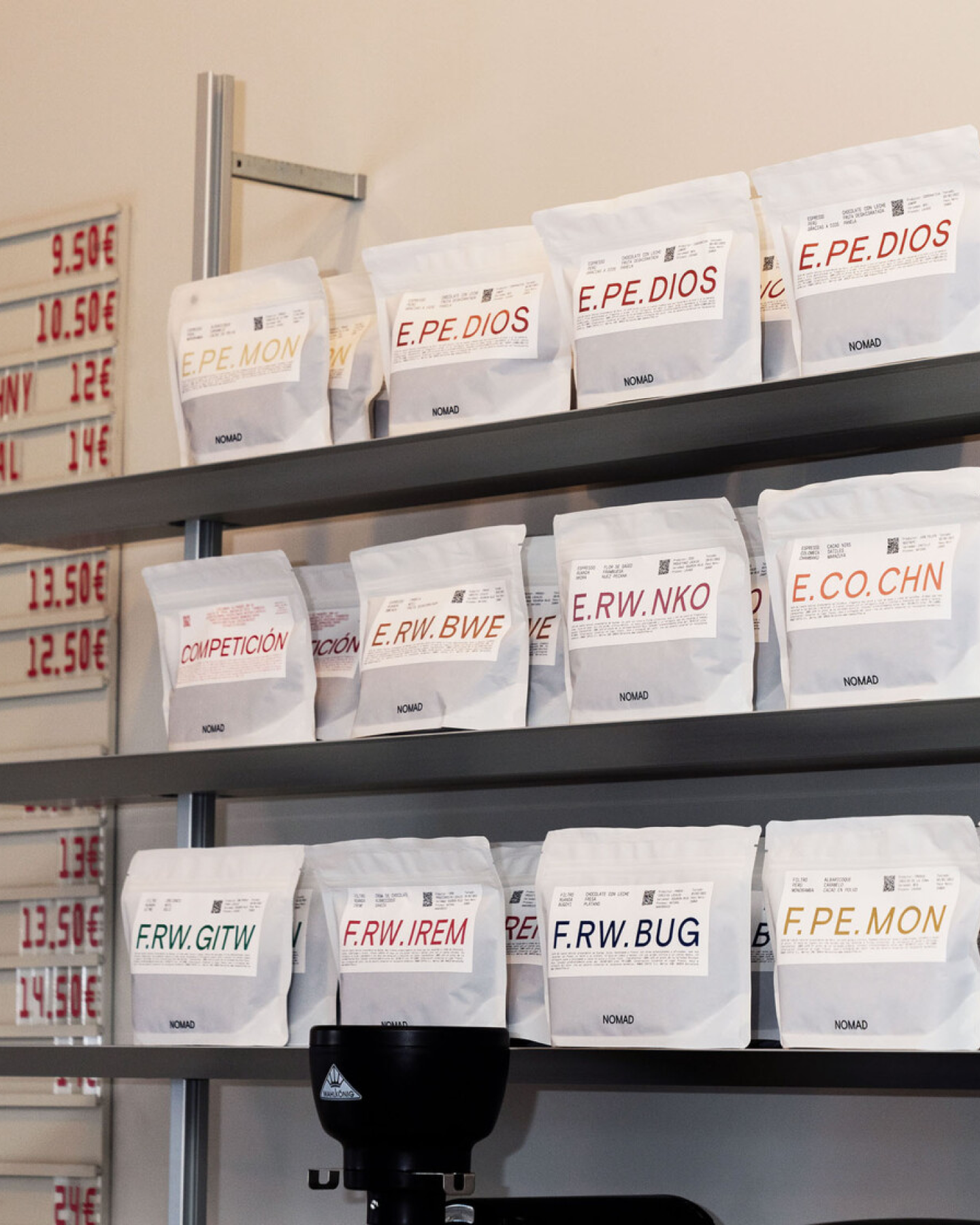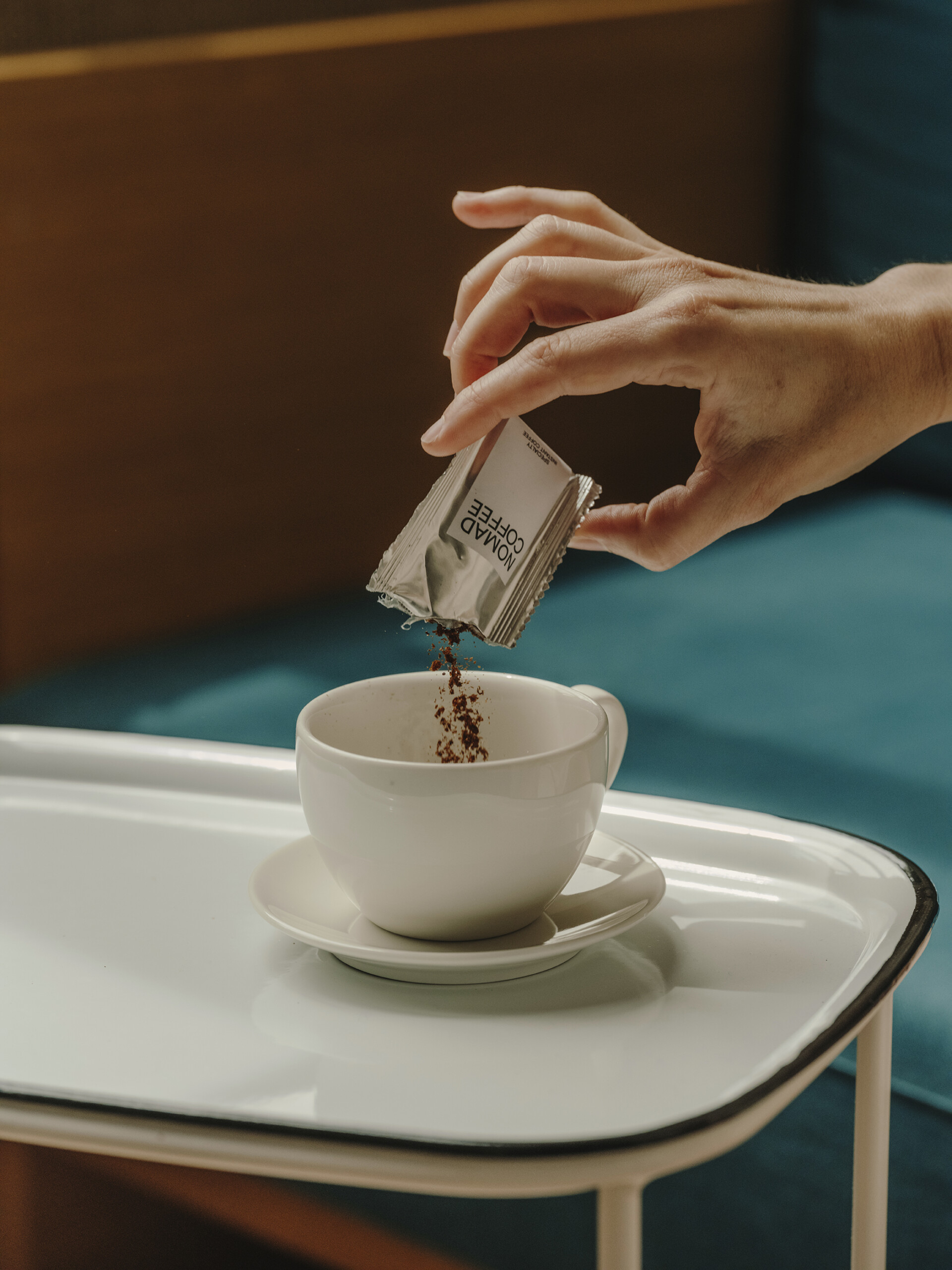More sustainable, more equitable and more inclusive
NOMAD COFFEE is a Certified B Corporation
We lead poverty reduction in the supply chain in the specialty coffee sector
We are so happy to announce that today we are a Certified B Corporation thanks to our efforts to have a positive impact on our workers, our communities, our customers and our planet.
In the specialty coffee sector, NOMAD COFFEE is one of the players leading a global movement for an inclusive, equitable and regenerative economy. As part of the Global B Network –B as in ‘benefits for everybody’–, NOMAD COFFEE has achieved an extraordinary score thanks to our impact business model with which we contribute to reducing poverty in the supply chain, as well as our commitment to improving our governance, optimizing the well-being of our team and being more respectful of the environment.

Reducing poverty in the supply chain
Without specialty coffee producers there would be no NOMAD COFFEE and, of course, we would not be able to enjoy a magnificent cup of coffee. We want to take care of them just as we take care of our team and that is why we establish direct contact when possible and long-term collaborations that ensure economic stability and better management of their time and resources. An example of this is having chosen El Bombo coffee, which was born from the Women and Coffee initiative created by Asobombo to value the coffee of 85 women producers from the Colombian regions of Huila, Cauca, Nariño and Tolima. It is marketed and sold in a differentiated way, ensuring that their remuneration is decent, improving their lives in matters of equity and training them to cultivate for quality.
Caring for people and the planet
We have always been concerned about these issues and it is for this reason that in 2020 we published our first transparency report (and we have continued to do so, year after year, contributing to The Specialty Coffee Transaction Guide, the best practice guide on the specialty coffee trade). However, that made us wonder many things: could we improve the agreements with our producers? Could we increase the traceability of our coffees? The possibility of being a Certified B company made us raise these and other questions, solve them and implement changes to improve us even further. Thus, today we can say that we meet the highest standards in terms of social and environmental performance, transparency, legal responsibility and commitment to positive impact.
How have we been certified?
In March 2023 we began the consulting process that helped us answer all the questions required to be certified. Several B Lab analysts studied them and request the necessary documentation to verify them. In September we completed the certification, which understands that our impact business model as a specialty coffee company contributes positively to the people involved and the planet. A month later and after great learning that has made us more aware and responsible with our actions as a company, we began to be a B company.
A solid commitment beyond economic gains
B Lab, the nonprofit network that strives to transform economic systems so that they benefit all people, communities and the planet in an inclusive, equitable and regenerative way, considers we have a solid commitment beyond economic gains. How we have reached this goal? B Labs helps to create standards, policies, tools and programs that modify the behavior, culture and structure of capitalism that have already impacted more than 150 industries in more than 80 countries.
If you need more information, write to us!














